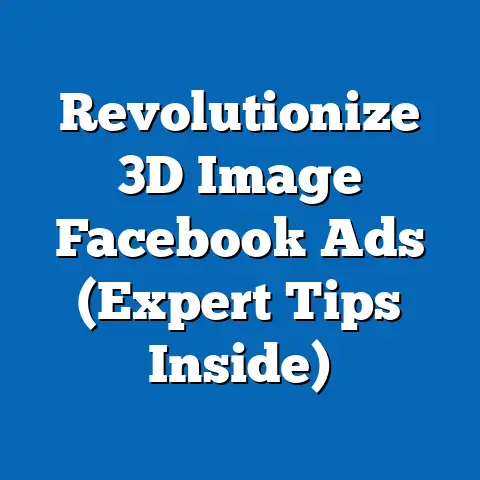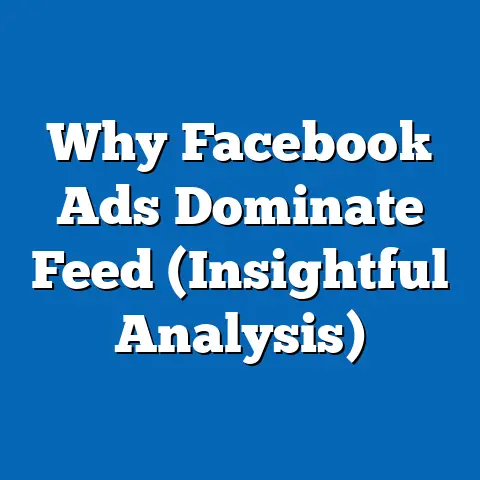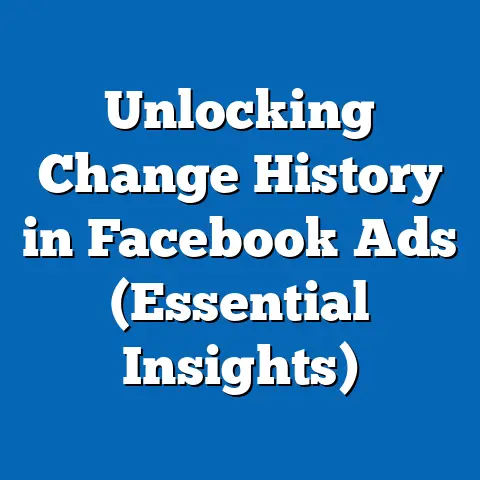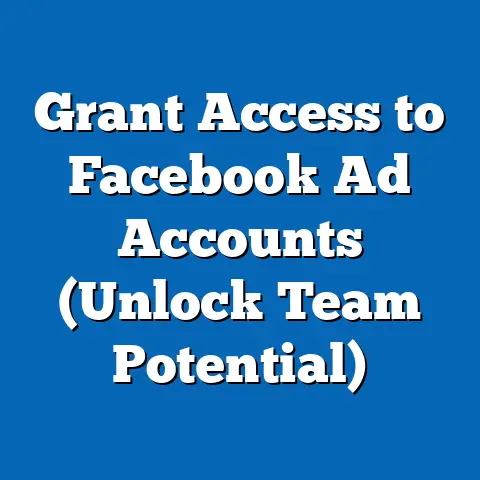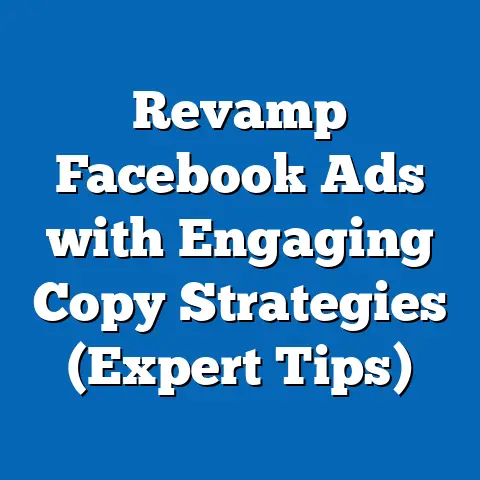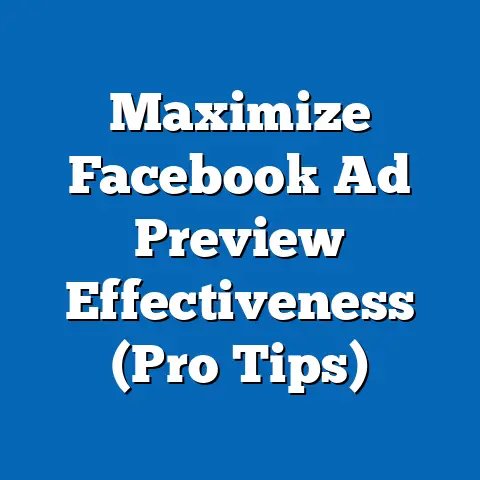Maximize Facebook Website Conversions (Proven Strategies Revealed)
I remember back in the day, when social media marketing was still a relatively new concept. Businesses relied heavily on traditional advertising methods like print ads, billboards, and television commercials to reach their target audience. It feels like a lifetime ago, but the digital landscape has transformed so much, especially with Facebook’s rise as a powerhouse for marketers. Now, more than ever, businesses are turning to Facebook ads to drive traffic to their websites and, most importantly, convert that traffic into paying customers.
Website conversions are the lifeblood of any online business. Without them, you’re essentially running in place, expending resources without seeing a tangible return. Facebook ads, when executed strategically, can be a game-changer in boosting those conversions. This article isn’t just about throwing money at Facebook; it’s about understanding the nuances of the platform and implementing proven strategies to maximize your website conversions. My goal here is to provide you with actionable insights and practical tips that you can implement immediately to start seeing real results.
Understanding Facebook Ads and Their Importance
The current landscape of Facebook advertising is nothing short of dynamic. With billions of active users, Facebook offers an unparalleled opportunity for businesses to reach a vast and diverse audience. But with great power comes great responsibility, and in this case, great competition. To stand out in the crowded Facebook marketplace, you need to understand the platform inside and out.
Conversions, in the context of Facebook ads, refer to the desired actions that you want users to take on your website after clicking on your ad. These actions can range from making a purchase to filling out a form, subscribing to a newsletter, or downloading a resource. Conversions are far more valuable than simple clicks or impressions because they represent a tangible step towards achieving your business goals.
Here’s a statistic that always sticks with me: According to recent studies, businesses that leverage Facebook ads effectively see an average conversion rate of around 9.21%. That’s significantly higher than the average conversion rate for other online advertising channels. This underscores the potential of Facebook ads to drive meaningful results when used strategically.
Facebook offers a variety of ad formats, each designed to cater to different business objectives. From image ads and video ads to carousel ads and collection ads, the options are seemingly endless. The key is to choose the ad format that best aligns with your business goals and resonates with your target audience. For example, if you’re selling a product, a carousel ad that showcases multiple angles and features might be more effective than a single image ad.
Key Takeaway: Facebook ads are a powerful tool for driving website conversions, but success depends on understanding the platform, defining your conversion goals, and choosing the right ad formats.
Crafting Compelling Ad Copy
In the world of Facebook advertising, your ad copy is your first impression. It’s what grabs users’ attention as they scroll through their feeds and entices them to click on your ad. Therefore, crafting compelling ad copy is essential for driving website conversions.
One strategy that I’ve found consistently effective is to focus on emotional resonance. People are more likely to take action when they feel an emotional connection to your brand or product. This means understanding your target audience’s pain points, desires, and aspirations, and tailoring your ad copy to address those emotions.
Storytelling is another powerful tool for crafting compelling ad copy. Instead of simply listing the features of your product or service, try telling a story that illustrates how it can solve a problem or improve someone’s life. Stories are inherently engaging and memorable, making them more likely to resonate with your target audience.
Let’s look at some examples of effective headlines and CTAs that I’ve seen increase conversion rates:
- Headline: “Tired of Sleepless Nights? Discover the Secret to Restful Sleep”
-
CTA: “Claim Your Free Sleep Guide Now”
-
Headline: “Transform Your Body in 30 Days with Our Proven Fitness Program”
-
CTA: “Start Your Transformation Today”
-
Headline: “Unlock Your Creative Potential with Our Online Design Course”
- CTA: “Enroll Now and Get 20% Off”
CTA: “Claim Your Free Sleep Guide Now”
Headline: “Transform Your Body in 30 Days with Our Proven Fitness Program”
CTA: “Start Your Transformation Today”
Headline: “Unlock Your Creative Potential with Our Online Design Course”
Notice how these headlines are attention-grabbing and speak directly to the reader’s desires or pain points. The CTAs are clear, concise, and create a sense of urgency, encouraging users to take immediate action.
A/B testing is crucial for optimizing your ad copy. This involves creating multiple versions of your ad copy with slight variations and testing them against each other to see which performs best. You can test different headlines, CTAs, or even the overall tone of your ad copy. The insights gained from A/B testing can help you refine your ad copy and increase your conversion rates over time.
Key Takeaway: Compelling ad copy is essential for driving website conversions. Focus on emotional resonance, storytelling, and clear CTAs. A/B test different ad copies to optimize performance.
Leveraging Targeting Options
One of the biggest advantages of Facebook advertising is its robust targeting capabilities. Facebook allows you to target your ads to specific audiences based on a wide range of criteria, including demographics, interests, behaviors, and more. Leveraging these targeting options effectively is crucial for maximizing your ad relevance and conversion potential.
Demographic targeting allows you to target users based on their age, gender, location, education level, and other demographic factors. This can be particularly useful if your product or service is targeted towards a specific demographic group.
Interest-based targeting allows you to target users based on their interests, hobbies, and passions. This can be a great way to reach users who are already interested in your niche or industry.
Behavioral targeting allows you to target users based on their online behavior, such as their purchase history, website visits, and app usage. This can be particularly effective for retargeting campaigns, where you target users who have previously engaged with your brand.
Creating custom audiences is another powerful targeting strategy. Custom audiences allow you to upload your own customer data, such as email addresses or phone numbers, and target those users directly on Facebook. This can be a great way to reach your existing customers with special offers or promotions.
Lookalike audiences take custom audiences a step further by allowing you to create audiences that are similar to your existing customers. Facebook analyzes the characteristics of your custom audience and identifies other users who share similar traits. This can be a great way to expand your reach and find new customers who are likely to be interested in your product or service.
Refining your audience targeting is an ongoing process. It involves continuously monitoring your ad performance and making adjustments to your targeting criteria based on the data you collect. By refining your audience targeting, you can ensure that your ads are reaching the right people at the right time, maximizing your conversion potential.
Retargeting campaigns are incredibly effective for driving website conversions. These campaigns target users who have previously visited your website or engaged with your brand in some way. For example, you can retarget users who have added items to their cart but haven’t completed the purchase. By retargeting these users with personalized ads, you can remind them of your product or service and encourage them to complete the purchase.
Key Takeaway: Facebook’s targeting options are a powerful tool for maximizing ad relevance and conversion potential. Leverage demographic, interest-based, and behavioral targeting, create custom and lookalike audiences, and refine your targeting based on data analysis. Don’t forget the power of retargeting campaigns!
Optimizing Landing Pages
Your landing page is where the magic happens. It’s where users ultimately decide whether or not to convert. Therefore, optimizing your landing pages is crucial for maximizing your Facebook website conversions.
Your landing page should align with your ad messaging. This means that the headline, copy, and visuals on your landing page should be consistent with the message conveyed in your ad. If users click on your ad expecting to find one thing and then arrive on a landing page that’s completely different, they’re likely to bounce.
User-friendly design is paramount. Your landing page should be easy to navigate, with a clear and concise layout. Avoid clutter and distractions, and make sure that your call-to-action is prominently displayed.
Mobile optimization is a must. A significant portion of Facebook traffic comes from mobile devices, so it’s essential to ensure that your landing page is optimized for mobile viewing. This means using a responsive design that adapts to different screen sizes and ensuring that your page loads quickly on mobile devices.
Analytics are your best friend. Use analytics tools like Google Analytics to track your landing page performance. Monitor metrics such as bounce rate, time on page, and conversion rate to identify areas for improvement.
Here are some insights on how to use analytics to assess landing page performance and make data-driven improvements:
- High Bounce Rate: If your landing page has a high bounce rate, it means that users are leaving the page quickly without taking any action. This could indicate that your landing page is not relevant to your ad messaging or that it’s poorly designed.
- Low Time on Page: If users are spending very little time on your landing page, it could indicate that they’re not engaged with your content. This could be due to poor copy, uninteresting visuals, or a lack of clear value proposition.
- Low Conversion Rate: If your landing page has a low conversion rate, it means that users are not taking the desired action, such as making a purchase or filling out a form. This could be due to a weak call-to-action, a lack of trust signals, or a complicated checkout process.
Key Takeaway: Landing pages are critical for conversions. Ensure they align with ad messaging, are user-friendly and mobile-optimized, and use analytics to drive improvements.
Analyzing Performance and Adjusting Strategies
The journey doesn’t end once your ads are live. In fact, that’s just the beginning. Tracking and analyzing your ad performance is essential for identifying areas for improvement and maximizing your return on investment.
Key metrics to monitor include:
- Click-Through Rate (CTR): This measures the percentage of users who click on your ad after seeing it. A high CTR indicates that your ad is relevant and engaging to your target audience.
- Conversion Rate: This measures the percentage of users who take the desired action on your website after clicking on your ad. A high conversion rate indicates that your landing page is effective in converting traffic into customers.
- Return on Advertising Spend (ROAS): This measures the amount of revenue you generate for every dollar you spend on advertising. A high ROAS indicates that your ads are generating a positive return on investment.
Facebook Ads Manager is your command center. This tool provides a wealth of data and insights into your campaign performance. Use it to track your key metrics, analyze your audience demographics, and identify trends and patterns.
Here are some examples of how data analysis can inform adjustments to your ads, targeting, and budgets for better conversion outcomes:
- Low CTR: If your CTR is low, it could indicate that your ad copy or visuals are not compelling enough. Try A/B testing different ad creatives to see which resonates best with your target audience.
- Low Conversion Rate: If your conversion rate is low, it could indicate that your landing page is not optimized for conversions. Try improving your landing page design, copy, and call-to-action.
- High Cost Per Conversion: If your cost per conversion is high, it could indicate that your targeting is too broad or that your ads are not relevant to your target audience. Try refining your audience targeting and creating more targeted ad campaigns.
Data analysis should be an ongoing process. Continuously monitor your ad performance and make adjustments to your strategies based on the data you collect. This will help you optimize your campaigns over time and maximize your conversion outcomes.
Key Takeaway: Continuous monitoring and analysis of ad performance are crucial. Use Facebook Ads Manager to track key metrics, and be prepared to adjust your ads, targeting, and budgets based on the data you collect.
Conclusion
Maximizing Facebook website conversions is an ongoing process that requires a strategic approach, a keen eye for detail, and a willingness to adapt and experiment. By crafting compelling ad copy, leveraging targeting options effectively, optimizing your landing pages, and analyzing your performance data, you can significantly increase your conversion rates and drive meaningful results for your business.
Remember, the key is to stay adaptable and continuously test new approaches to find what works best for your business. The Facebook advertising landscape is constantly evolving, so it’s essential to stay up-to-date with the latest trends and best practices.
Now, it’s your turn. Take these strategies and implement them in your own Facebook ad campaigns. I encourage you to share your success stories, ask questions, and seek further information on optimizing your Facebook ad campaigns. The journey to maximizing conversions is a continuous one, and I’m here to support you every step of the way.

